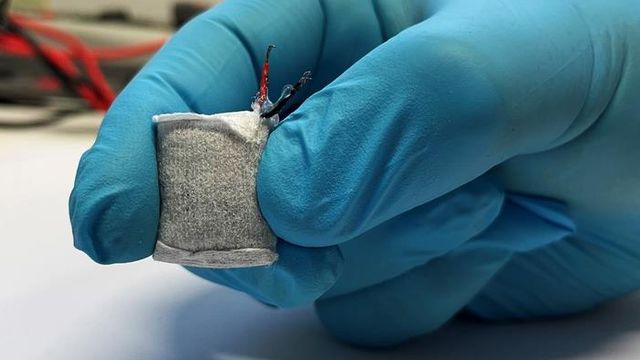A team of researchers from ETH Zurich in Basel have developed an implantable fuel cell that generates electrical energy from excess glucose in the blood. The fuel cell, which is wrapped in a nonwoven fabric and coated with alginate, contains an anode made of copper-based nanoparticles that split glucose into gluconic acid and a proton to produce electricity. The researchers combined the fuel cell with artificial beta cells that can produce insulin to lower blood glucose levels. The energy provided by the fuel cell is also enough to enable the implanted system to communicate with external devices. The prototype has been successfully tested in mice, but the researchers lack the resources to develop it into a marketable product. The development of the implantable fuel cell could create a diabetes network with its own power supply, providing a self-sufficient and sustainable source of power for patients with type 1 diabetes.
A team of researchers from ETH Zurich in Basel, led by Martin Fussenegger, have developed an implantable fuel cell that uses excess glucose in the blood to generate electrical energy. The fuel cell, which resembles a small tea bag, contains an anode made of copper-based nanoparticles that split glucose into gluconic acid and a proton to produce electricity, powering biomedical devices.
The researchers combined the fuel cell with artificial beta cells, developed by the same group, to effectively lower blood glucose levels. The beta cells can be stimulated using electric current or blue LED light to produce and secrete insulin, similar to the natural role of beta cells in the pancreas.
According to Fussenegger, the idea to use excess metabolic energy to produce electricity for biomedical devices was inspired by the excessive carbohydrate consumption leading to obesity, diabetes, and cardiovascular disease in many Western industrialized nations.
The alginate-coated fuel cell is wrapped in nonwoven fabric, approved for medical use, and can be implanted under the skin. The fuel cell draws glucose from the tissue into the fuel cell within and is then broken down into gluconic acid and a proton, producing electricity that powers the biomedical device.
This innovation is expected to be especially beneficial for patients with type 1 diabetes who require insulin externally to regulate their blood sugar levels. Insulin pumps, as well as other medical applications such as pacemakers, currently require a reliable energy supply, primarily from single-use or rechargeable batteries.
The combination of the implantable fuel cell and artificial beta cells could create a diabetes network with its own power supply, providing a self-sufficient and sustainable source of power for patients with type 1 diabetes.
A team of researchers has developed a system that combines sustained power generation and controlled insulin delivery for patients with diabetes. The implantable fuel cell generates electrical energy as soon as it detects excess glucose in the blood. The energy is then used to stimulate artificial beta cells to produce and release insulin into the blood, bringing the blood sugar levels to normal. Once the blood sugar levels fall below a certain threshold value, the production of insulin and electricity stops.
The fuel cell’s electrical energy is sufficient to enable the implanted system to communicate with external devices such as a smartphone, allowing potential users to adjust the system via a corresponding app. A doctor could also access it remotely and make adjustments. Martin Fussenegger, the team leader, believes that the new system autonomously regulates insulin and blood glucose levels and could be used to treat diabetes in the future.
Although the prototype has been successfully tested in mice, the researchers are unable to develop it into a marketable product due to limited financial and human resources. This would require an industry partner with the appropriate resources and know-how.
Don’t miss interesting posts on Famousbio










